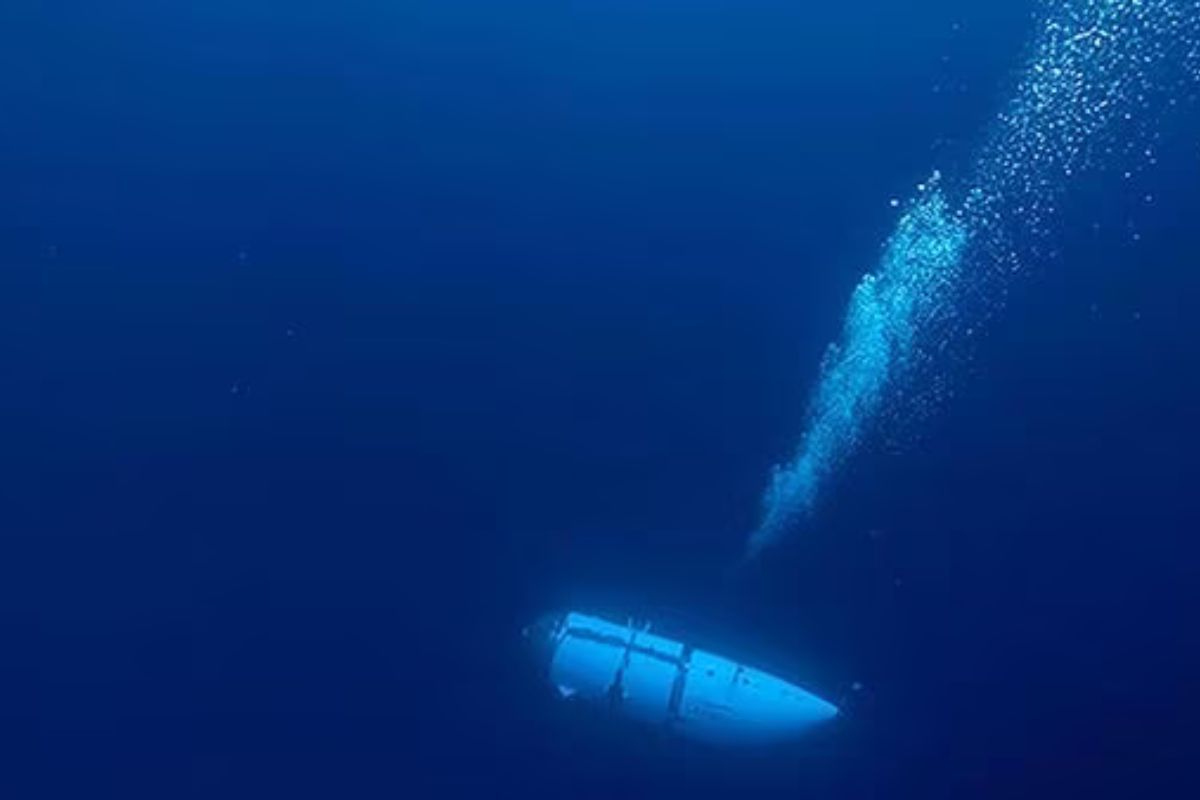Trump-proofing
Nato The resilience of the North Atlantic Treaty Organisation has been a cornerstone of Western security for the past 75 years, built on a foundation of collective defence and mutual support among 32 member nations.

The image shows Titan submersible during a descent.
A submersible watercraft carrying five individuals has gone missing after setting out to explore the historic Titanic shipwreck site in the North Atlantic on Sunday Night. The disappearance occurred shortly after the submersible, named the Titan, was deployed from the Canadian expedition ship Polar Prince. Despite efforts from search teams, the whereabouts of the submersible remain unknown.
The Titan, a 22-foot carbon-fiber and titanium craft, embarked on its journey to the Titanic shipwreck site, situated on the ocean floor off Newfoundland. Around an hour and 45 minutes into the dive, the submersible lost contact with the surface ship. U.S. Coast Guard officials reported detecting underwater noises during the search, leading them to focus their efforts on the area from where the sounds originated.
Advertisement
Authorities estimate that the submersible carried a 96-hour supply of breathable air when it set out on the expedition. As the search continues, concerns grow over the dwindling oxygen levels inside the submersible. It is anticipated that the air supply could be exhausted by Thursday morning. Unfortunately, there is no way to precisely determine the remaining oxygen levels or replenish the supply for the submersible.
Advertisement
The submersible accommodates a total of five individuals. Among them are Stockton Rush, the founder and CEO of OceanGate Expeditions, the operating company behind the vessel. Joining him are Hamish Harding, a British businessman and explorer, Shahzada Dawood, another British businessman, and his son Suleman from a prominent Pakistani family. Additionally, Paul-Henri Nargeolet, a French maritime expert with extensive experience in diving to the Titanic wreck, is also part of the team.
OceanGate, a private company based in Everett, Washington, owns and operates the Titan submersible. Founded in 2009 by aerospace engineer and pilot Stockton Rush, OceanGate specializes in organizing expeditions to shipwrecks and underwater canyons. The company also provides crewed submersibles for commercial projects and scientific research purposes. The Titan, described as the only crewed submersible capable of carrying five people to depths of over 13,000 feet, has been used to offer tours of the Titanic site since 2021.
Safety concerns have emerged as more information becomes available about the expedition. Experts from OceanGate had previously issued warnings about the company’s rapid pursuit of extreme tourism opportunities for affluent clients. In 2018, over three dozen leaders in the submersible craft industry expressed apprehensions through a letter addressed to OceanGate, cautioning against potential “catastrophic” problems associated with the submersible’s development and its planned voyage to the Titanic wreckage.
The R.M.S. Titanic, the largest steamship in the world during its time, tragically sank after colliding with an iceberg on its maiden voyage in April 1912. The wreckage, which was discovered in fragments in 1985, lies approximately 400 miles off the coast of Newfoundland. More than 1,500 lives were lost in the disaster.
The U.S. Coast Guard, in coordination with Canadian authorities and commercial vessels, has been leading the search for the missing submersible. Sonar buoys have been deployed in the water, while the expedition ship utilizes sonar technology to locate the submersible underwater. Both U.S. and Canadian aircraft, along with surface vessels, are scanning the ocean’s surface in an effort to locate the submersible. As of Wednesday, the search involved five surface assets and two remotely operated vehicles, with additional resources expected to join the operation in the coming days.
Advertisement